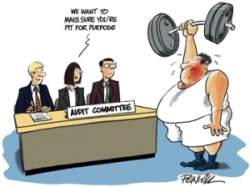Being Fit for Purpose

It’s the returns season again. Wow it comes around fast these days, it must be my age! It only seems a week or so ago we were registering the new students, all online (not sure what that actually means nowadays). Online but still in front of PCs in large sports halls with new students accompanied by support staff gleaning personal details for HESA and the student finance office! Oh and making sure they have their 180 credits recorded (phew nearly forgot I was in a University). Actually, as I write this, I’m feeling a bit of a fraud as I don’t have to get my hands ‘dirty’ at the registration events. I do work with student records, but not face to face with students. (I did meet a student once - honest). Part of my role is to ensure that the data being collected and recorded is ‘fit for purpose’.
It would be so easy just to sit back and say ‘data quality is the responsibility of everyone who acquires and stores data’. While most student records officers take on this responsibility wholeheartedly, experience does show there still needs to be a range of practical data quality activities that have to be undertaken in ‘real time’. Thankfully, the reporting technologies now available in institutions takes a lot of the pressure off the manpower needed to check data as it arrives on systems. What I mean by the term ‘real time’ is that there is a need to monitor the accuracy of data inputted by staff when working with new students. Is ethnicity data being collected and recorded correctly? Is there a system operator that repeatedly miscodes module data? As a result of this monitoring, it has been known to have some operators ‘removed’ from data entry (I’m not sure what happens to them though).
However there is another range of activity, hidden to most in the institution that underpins the registration event. As the registration is the key data collection activity undertaken by the institution, it is essential that any computer systems used are correctly configured; that the system is also fit for purpose. Believe it or not, each year some coding systems change, new products are devised by academic departments, all of which need adding to the corporate information system. There used to be an advert on TV that featured a little old lady in the wilds of Scotland, who complained that her phone line had stopped working – but then by magic, it mended itself, ‘all on its own you know’. Meanwhile, there were men dangling from helicopters; engineers leaping onto telegraph poles; the professionals working all night to ‘fix her line’. Well, my guys have never dangled from a helicopter but, with some complex coding changes, the coding up of new courses (the products mentioned above), all sorts of data overwrites, exceptions built into the CIS, (codes for new entrants but not continuers) new reference data mappings, changes to data fields on the registration screens, all take place to ensure the registration events run smoothly.
These four key areas; the configuration of systems/reference data, the monitoring of data input, the professionalism of student records officers and the technologies of exception reporting, all come together to underpin the quality of data.
Data quality is a slinky beast. It is not something that takes place just once a year. Data quality work spirals throughout the year; it is something you have to continually address to ensure data remains fit for purpose. Data is not just for external returns, it’s for all of us to use throughout the year. They say staff is an organisations greatest resource. This is so true. However if people are up there on the top run of the value ladder, then we must ensure that data and information is on the next run down, else why bother!


